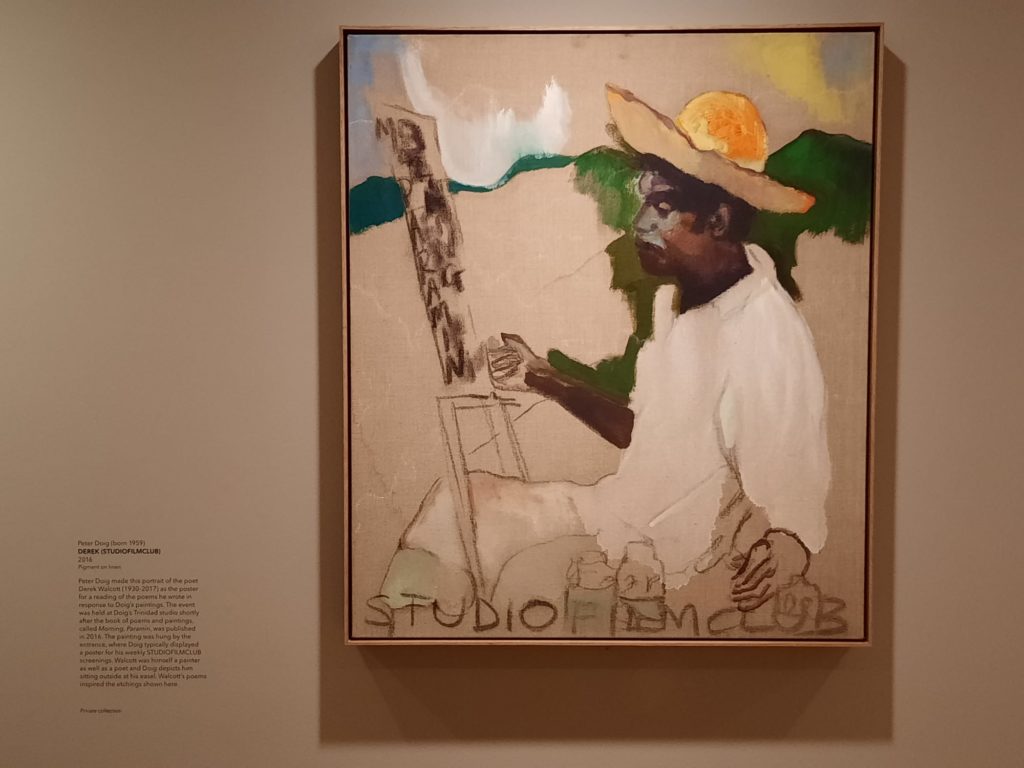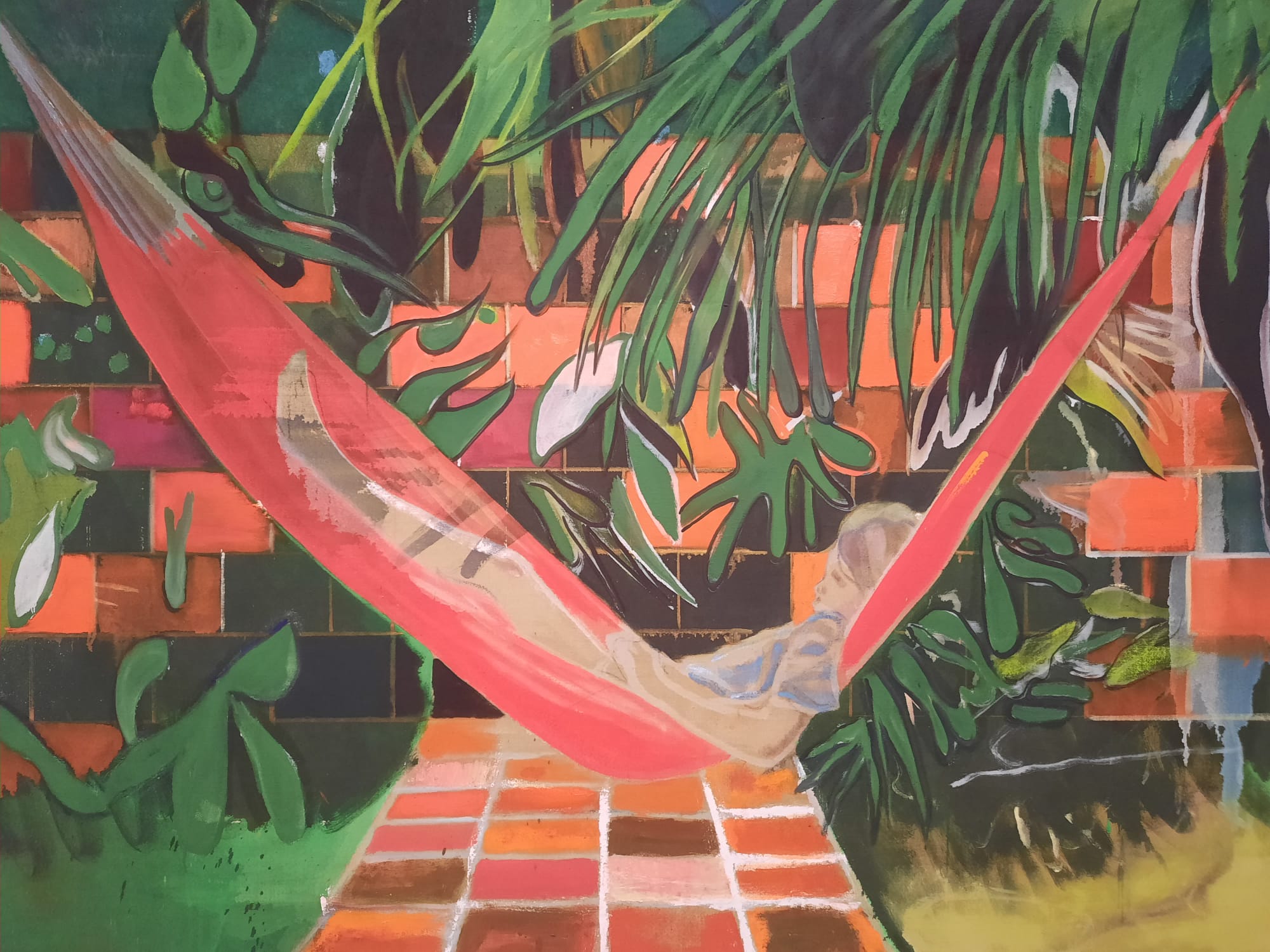Peter Doig – The Courtauld Gallery, London
Peter Doig’s recent works show why he is such an important contemporary painter. This small Courtauld Gallery show gives space to the complexity and uniqueness of his art historical and personal references.





Peter Doig
Long-time readers know that the Courtauld Gallery’s exhibition space is one of my London favourites. The main reason is that it is small but perfectly formed: enough to show off an artist or a topic, not enough to get tired of the repetition. The exhibitions I’ve seen here since the Courtauld reopened following a major renovation have been either artists represented in Samuel Courtauld’s collection (Van Gogh, Munch), or with a connection to Somerset House (Fuseli).
I was therefore interested to see how a more contemporary artist’s work would feel in this space. Enter Peter Doig with a number of recent works, including some executed since his return to London in 2021. A sense of place is central to Doig’s work. Born in Scotland, he lived as a child in Canada and Trinidad. He studied art in London, before returning to Trinidad in 2002, where he remained until 2021. Painting from a number of reference sources, his works are figurative without being (photo)realistic, and suffused with art historical references. His depictions of the Caribbean, London or Canada come with their own colour palettes, and an almost tangible sense of the atmosphere of each place: light, sounds, emotions.
Of the dozen or so works on display in this exhibition, the earliest was started in 2011. Many have been completed or reworked over the years. Doig painted one or two specifically for this exhibition. Together they show off what is best about Doig’s work: his unusual use of colour, his unexpected compositions. The art historical references ensure that there is a dialogue with the permanent collection which enriches our understanding of both the old and the new.





New Yet Familiar
It would almost be easier to tell you which artists Doig’s works didn’t remind me of rather than the other way around. The colour blocking reminded me of German Expressionist painters. There is something in the cropping and foregrounded figures which reminds me of Edvard Munch. The skier in a harlequin outfit brings to mind Watteau or Picasso. The paintings which clearly come from source photographs bring to mind Gerhard Richter. The list goes on.
What is maybe surprising, then, is that the paintings are so entirely themselves. In each, there is a choice of colours, an unexpected angle, which throws us off guard. The world seems unfamiliar, made new. Doig is able to handle paint in different ways within the same canvas. I wasn’t alone in being transfixed by Alice at Boscoe’s (2014-23), a depiction of the artist’s daughter in a hammock in a Trinidadian garden. Alice is a ghostly form, much of her is unpainted linen. The bold foliage outlined in black and the screaming colours of the hammock and tiles threaten to engulf her. But don’t. It’s a remarkable painting, one that I’m sure would feel different every time you stand in front of it.
This is perhaps the quality that sets Doig apart. If a Trinidadian scene seems wild and unfamiliar, perhaps we (as a Western audience with our unconscious biases) expect that. But what about a scene of the Regent’s Canal, quintessential London? Only the bridge is bright red, the man at the tiller grey. These choices draw us in, keep us looking, draw connections to other artists and other works by defying our expectations.






Peter Doig And Derek Walcott
If the two rooms with their dozen or so paintings aren’t quite enough for you, there is a supplementary exhibition downstairs. Peter Doig: Etchings for Derek Walcott is again small (one room), but shows another side of the artist’s work. Like Doig, the poet Derek Walcott (1930-2017) lived and worked in Trinidad for a time. They first met in 2014, and formed a friendship.
In 2016, Walcott published a collection of poems inspired by Doig’s paintings. Doig then created etchings inspired by the poems. Luckily it stopped there, or it might have become an Escher-esque never-ending back and forth. Or maybe it might have been interesting to see how that would have progressed. In any case this is the first time the etchings, still in Doig’s collection, have been exhibited.
They show another side to the artist’s work. The form without (most of) the colour, in a way. It’s interesting to see how Doig experiments with different techniques, and how some of the same motifs, like alpine scenes, reappear. It’s a good counterpoint, and probably helps those who don’t like very small exhibitions (unlike me) to feel they are getting their money’s worth. Definitely worth a look either way once you have seen the main event and then wandered the galleries to connect the art-historical dots from Doig back through centuries of references.
Salterton Arts Review’s rating: 4/5
Peter Doig on until 29 May 2023
Trending
If you see this after your page is loaded completely, leafletJS files are missing.


Oh yes! Such a brilliant point; his work is simultaneously like so many others and recognisably his…a hybrid style that triggers recognition and newness at once. A great lesson on the matter of trying to be ‘unique’.
I think it takes a sort of confidence to be so open about your art historical references. Everyone takes inspiration from somewhere (consciously or subconsciously) but Doig leads us straight to it rather than leaving us debating.
Such as a incredible work.
I really like it.
Thanks Peter Doig.